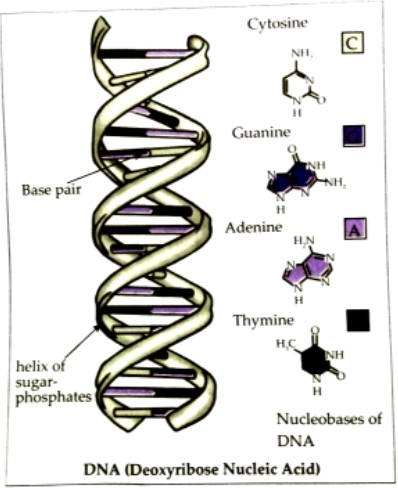Q. 1. Textbook activity question. 11
1.Sketch and explain the structure of DNA and various types of RNA.
Ans:
DNA is made up of nucleotide molecules. Phosphate group, a sugar group and a nitrogen base are present in each nucleotide.
The nitrogen base is of four types. Cytosine ( c) guanine (G), thymine (T), and adenine (A).
The order in which there nitrogen bases are present determines the genetic code.
Human DNA has around 3 billion bases and most of the bases are the same in all human beings.
The order of nitrogen, bases forms genes which instructs cell how to prepare proteins.
Nucleotides are joined together to form two long strands that twist to create a structure called a double helix.
Adenine pairs with thymine and guanine pairs with cytosine.
DNA is coiled tightlyl to form chromosomes which are found inside the nucleus.

Types of RNA are mRNA, rRNA and tRNA.
Ribonucleic acid (RNA) is a nucleotide polymer, which is made of ribose sugar, a phosphate and bases as adenine, guanine, cytosine and uracil.
The ribose sugar of RNA has a hydroxyl group and it is absent in DNA. RNA has a structure similar to DNA.
rNA: It is a component of the ribosomes organelle and helps in protein synthesis.
mRNA: it carries information of protein synthesis from genes to the ribosomes.
tRNA: It carries amino acids up to the ribosomes.
3. Which component of the cellular nucleus of living organisms carries hereditary characters?
Ans The chromosomes carrying hereditary characters called genes are located in the nucleus of a living cell.
4. Which are the components the DNA molecule?
Ans i. The double helical structure of DNA was proposed by Watson and Crick.
ii. It is arranged in a double helix pattern and resembles the structure of a ladder.
iii. DNA molecule consists of three types of chemical components, such as phosphate, sugar (deoxyribose) and four nitrogenous bases (guanine, cytosine, thiamine and adenine).
iv. All deoxy ribose molecules are linked to each other by phosphate linkage.
v. Phosphate group are negatively charged and it gives DNA molecule a negative charge.
5. What do we call to the process of transfer of physical and mental characters from parents to the progeny?
Ans The process of transfer of physical and mental characters from parents to the progeny is called inheritance or heredity.
6. Explain the meaning of genetic disorders and give names of some disorders.
Ans a. Diseases or disorders occurring due to tabnormalities in chromosomes and mutations in genes are called genetic disorders.
b. Genetic disorders may ccur due to increaseor decrease in chromosome number and deletion or translocation of any part of chromosomes.
c. some expamples of geetic disorders are as follows:
Polygenic disorders like diabetes, blood pressure, heart disorder, cleft lip, cleft palate, spina bifida, asthama, obesity etc
Monogenic disorders like TAy Sach’s galactosemia, albinism, sickle-cell anemia, haemophilia,night blindness, phenylketonuria, cytic fibrosis, etc.
Chromosomal disorders like Down’s syndrome, etc.
7. What is the function of the appendix of our digestive system?
Ans i. The appendix is a vestigial organ that was once used by our herbivorous ancestors.
ii.It was found that in herbivorous vertebrates the appendex is comparatively larger and it helped in the digestion of tough herbivorus food such as the bark of a tree.
Iii .It is also supposed to be a store house of good bacteria.
8. Are our wisdom teeth really useful for chewing the food?
Ans: No, we do not use our wisdom teeth for chewing the food, because it is a vestigial structure in human body.
9. Why did the huge animals like dinosaur become extinct?
Ans: i. Inspite of the fact that the cause for dinosaur extinction is still a mystery, following events could have played a role.
ii. Gas seeping and ash evolving from volcanoes suffocated most of the dinosaurs.
Iii The entire population of dinosaur may have been wiped out due to diseases.
Iv. The dinosaurs could not survive after a big meteorite crashed into earth, drastically changing the climatic conditions.
vi. Imbalances in food chain leads to starvationof the dinosaurs.
10. Why are many species of animals and birds getting extinct?
Ans: i. Animals and birds extinction may be caused by natural occurrences such as climatic heating or cooling or changes in sea levels.
ii. Habitat destruction as farming land expands and forests are cut-down. This is the main cause along with pollution and over fishing or hunting.
11. ……Is each of the organs useful to organism?
Ans i. Most of the organs are useful to organisms. At the same time few organs may be present now but they have lost their function in the process of evolution.
ii. In human beings, appendix, tail-bone (coccyx), wisdom teeth and body hair are not useful now.
12. Which are the different organs in body of organisms?
Ans i. In digestive system – (Mouth, Stomach,Liver, Pancreas, intestine, etc.)
ii.Skeletal system – (Bones)
iii.Circulatory system – (Heart, Arteries, Veins , etc.)
iv.Respiratory system – (Diaphragm, Lungs, Larynx, etc) are some of the organs in an organism.
Q.2. Multiple Choice Questions 19
1.The proof for the fact that protein synthesis occurs through was given by George Beadle and Edward Tatum.
A. Gene b. Ribosome c. RNA d. Transcription
Ans Option a.
2.Which of the following are unicellular ?
A. Chlorella b. Paramoecium c. Peripatus d. Both a and b
Ans Option d.
3.The given figure provides essential evidence regarding the evolution of species from one form to another which are referred to as-
A. Anatomical Evidences b. Morphological Evidences
c. Paleontological Evidences d. embryological Evidences

Ans Option d.
4.Various similarities like structure of mouth, position of eyes, structure of nostrils and ear pinnae are seen in animals provide.
A. Anatomical Evidances b. Morphological Evidences
c. Paleontological Evidences d. Embryological Evidences
Ans Option b.
5.Which of the following is considered as the first example of wise-man ?
A. Cro-Magnon man b. Austrelopithecus c. Neanderthal man d. Homo sapiens
Ans Option c.
6.Evolution means ……………. .
a. A. Classification of animals b. Speciation of animals
c. Gradual development d. Development of fossils
Ans Option c.
7.Which of the following shows anatomical/superficial similarity to that of a human hand ?
a. A. Cat’s foreleg b. Patagium of bat c. Flipper of whale d. All of the above
Ans Option d.
 8.
8.
9.The part in the above figure which is a vestigial organ is called as-
a. A. Appendix b. Coccyx c. Ear muscles d. Ear Pinna
Ans Option c.
10.The causality behind the sudden changes was understood due to …………… theory of Hugo de Vries.
A. Mutation b. Translocation of DNA
c. Formation of RNA d. Translational process of DNA
Ans Option a.
11. ……is a connecting link between annelida and arthropoda.
Duck-billed platypus b. Peripatus c. Lungfish d. Whale
Ans Option b.
12. Which of the following is first example of class Homo sapiens?
A. Neanderthal b. Dryopithecus c. Cro Magnon d. Ramapithecus
Ans Option a.
13. What does the following diagram represent ?
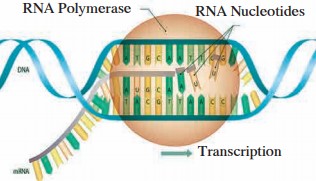
A. Mutation b. Translocation of DNA
c. Formation of mRNA d. Translational process of DNA
Ans Option c.
14. Vestigial organ present in human body is proof of evolution.
A. Gradual development b. Appendix c. Gene d. Ribosome
Ans Option b.
 15. Which of the following diagram explains the inheritance of acquired characteristics ?
15. Which of the following diagram explains the inheritance of acquired characteristics ?
a.
 Some animals with special characteristics
Some animals with special characteristics
b.
 Structure of ground level
Structure of ground level
c.
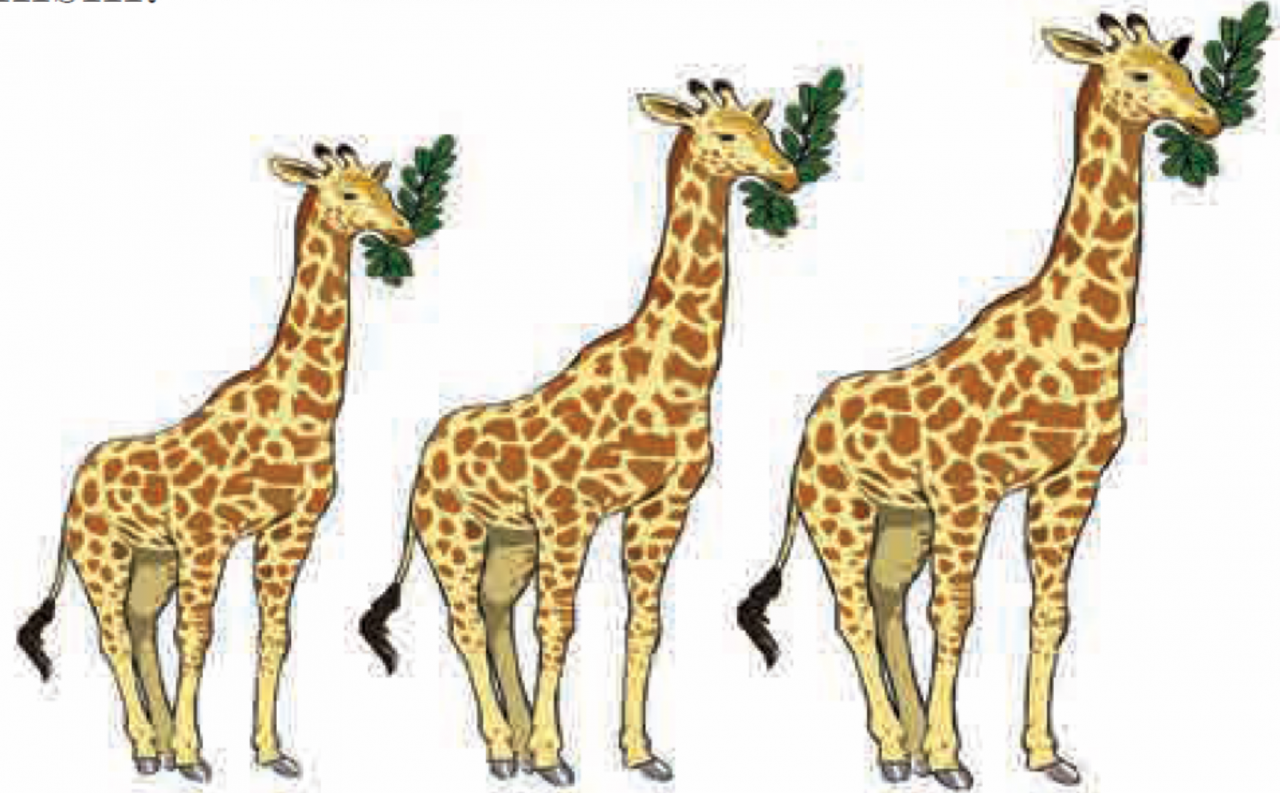 Structure of bones
Structure of bones
d.
Giraffe
Ans Option d.
16. Which of the following is absent in RNA ?
A. Adenine b. Guanine c. Uracil d. Thymine
Ans Option d.
17. The genetic disorders like sickle cell anemia is the result of –
A. Mutation b.Transcription c.Translation d.Evolution
Ans Option a.
18. Remnants and impressions of buried organisms existed millions of years ago remain preserved underground are called as –
A. Fossils b. Carbon consumption of animals c. Manuscripts d. Connecting Links
Ans Option a.
19. Which of the following form a connecting links between two groups of animals ?
A. Platipus b. Peripatus c. Gillfish d. a and b both
Ans Option d.
20. Transfer of information from molecule of DNA to RNA is called as process.
A. Mutation b. Translocation c. Transcription d. Gradual development
Ans Option c.
Q. 3. Find the odd one out 5
1. As per cellular organization of body – Peripatus, Amoeba, Paramoecium, Chlorella
Ans Peripatus
2. Theory of Evolution –
Morphological Evidences, Vestigial Organs, Lamarckism, Embryological Evidences
Ans Lamarckism
3. Relating to the different groups of animals – Duck billed platypus, Snake, Lungfish, Peripatus
Ans Snake
4. Human organs – Coccyx, Bones, Appendix, Ear muscles
Ans Bones
5. With respect to central dogma – mRNA, rRNA, tRNA, DNA, Ribosome
Ans DNA
Q. 4. Find co-related terms 9
1.Synthesis of RNA : Transcription : : Synthesis of proteins : ……………
Ans Synthesis of RNA : Transcription : : Synthesis of proteins : Translation
2. Fossils : Paleontological evidence : : Flipper of whale and for limb of bat : ……………
Ans Fossils : Paleontological evidence : : Flipper of whale and for limb of bat : Anatomical evidence
3. Fossils : Paleontological Evidences :: Appendix : ……………. .
Ans Fossils : Paleontological Evidences :: Appendix : Vestigial Organs.
4. DNA : Deoxyribose sugar : : RNA : ……………
Ans DNA : Deoxyribose sugar : : RNA : Ribose sugar
5. RNA to proteins : Translation :: DNA to mRNA : ……………. .
Ans RNA to proteins : Translation :: DNA to mRNA : Transcription.
6. Wisdom teeth : Vestigial organs :: Lungfish : ……………
Ans Wisdom teeth : Vestigial organs :: Lungfish : Connecting links
7. Survival of fittest : Darwin :: Acquired characters : ……………
Ans Survival of fittest : Darwin :: Acquired characters :
8. Lamarck 8 RNA : Uracil :: DNA : …………….
Ans RNA : Uracil :: DNA : Thymine.
9. mRNA : Carries message from DNA : : tRNA : ……………
Ans mRNA : Carries message from DNA : : tRNA : Transport amino acids
Q. 5. Match the pair 4
1
| Column “A” | Column “B” |
| a.
Some animals with special characteristics |
|
| i. Anatomical Evidences | |
| ii. Lamarckism | b.
Structure of bones |
| c.
Giraffe |


Ans:
| i. Anatomical Evidences | |
| Structure of bones | |
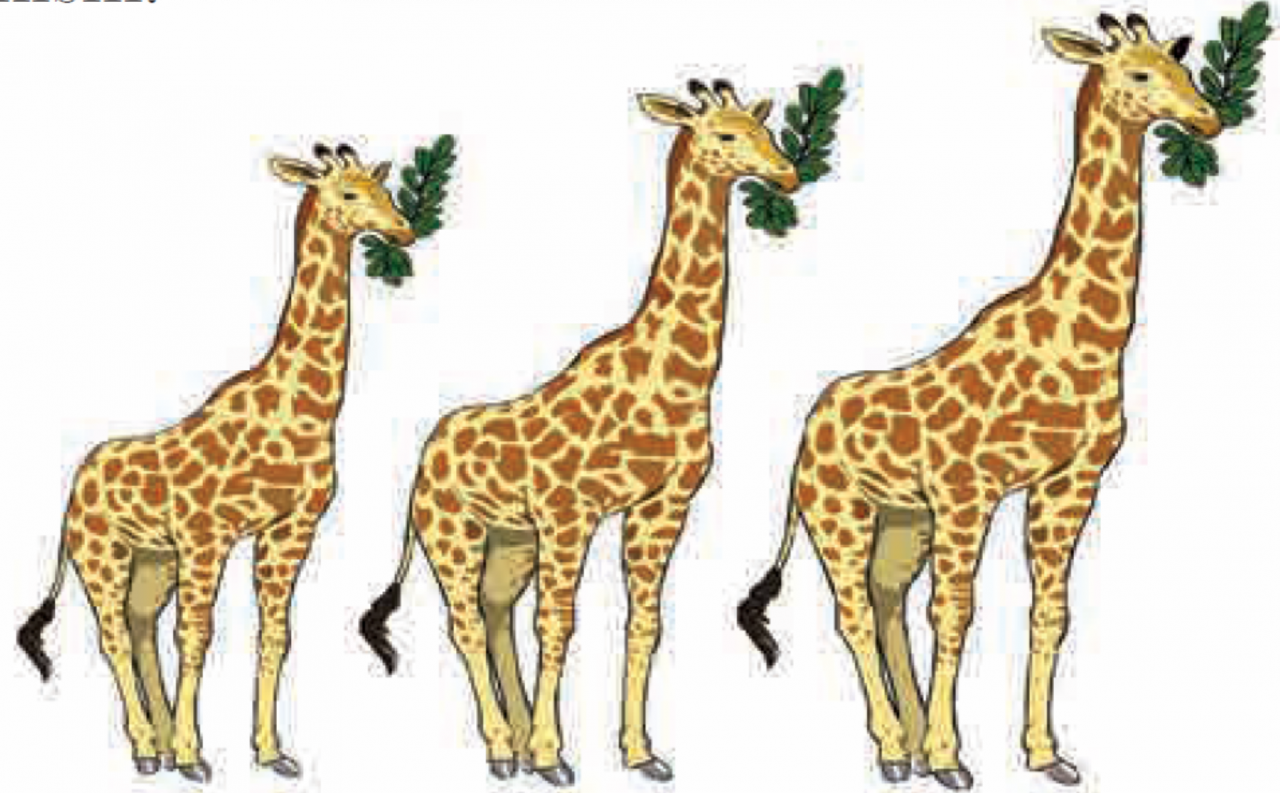
Giraffe |
|
| ii. Lamarckism | |
2
| Column “A” | Column “B” |
| i. Protein synthesis | a. Non Radioactive |
| ii. C-12 | b. Evolution |
| c. Central Dogma |
Ans:
| i. Protein synthesis | Central Dogma |
| ii. C-12 | Non Radioactive |
3
| Column “A” | Column “B” |
| i. Peripatus | a. Vestigial part |
| ii. Coccyx | b. Annelida and Arthropoda |
| c. Anatomical Evidance | |
| d. Translocation |
Ans:
| i. Peripatus | Annelida and Arthropoda |
| ii. Coccyx | Vestigial part |
4
| Column “A” | Column “B” |
| i. Gregor Mendel | a. Lamarckism |
| ii. Hugo de Vries | b. Modern Genetics |
| c. Amino acids | |
| d. Mutation |
Ans:
| i. Gregor Mendel | Modern Genetics |
| ii. Hugo de Vries | Mutation |
Q. 6. State True or False 10
1. Carbon consumption of animals and plants increases after death.
Ans Carbon consumption of animals and plants increases after death. – False
2. C-12 is non-radioactive.
Ans C-12 is non-radioactive. True
3.Study of fossils is an important aspect of study of evolution.
Ans:True
4.The human hand, cat’s foreleg, flipper of whale and patagium of bat provide Paleontological Evidences.
Ans The human hand, cat’s foreleg, flipper of whale and patagium of bat provide Paleontological Evidences.False
5.Johann Gregor Mendel is the pioneer of the modern genetics.
Ans True
6.Generic name of humans today is Humo sapiens.
Ans Generic name of humans today is Humo sapiens. True
7.The process of RNA synthesis is called as ‘translation’.
Ans :False
8.Natural selection is not the only factor responsible for evolution.
Ans ;True
9.Lamarckism is the inheritance of acquired characters.
Ans; – True
10.The theory of natural selection by Darwin preaches the survival of smartest organism.
Ans The theory of natural selection by Darwin preaches the survival of smartest organism. False
Q. 7. Name the following 9
1. Name any two unicellular organisms.
Ans Amoeba, Chlorella, Paramoceium [any 2]
2. Vestigial organs in human beings.
Ans Appendix, tail bone (coccyx), wisdow tooth.
3.The process by which ribosome moves on mRNA by one triplet codon.
Ans Translocation
4.Name the Genetic material in major bacterial cells.
Ans DNA
5.Name any two organisms referred to as connecting links.
Ans Duckbill Platypus, Lungfish, Peripatus [any 2]
6.Name any two evidences as a proof for the Theory of Evolution.
Ans Morphological Evidences, Anatomical Evidences, Paleontological Evidences, Embryological Evidences, Connecting Links [any 2]
7.The process of gradual development in organisms over the long period of time.
Ans Evolution
8.Technique used to determine the age of fossils.
Ans Carbon dating
9.

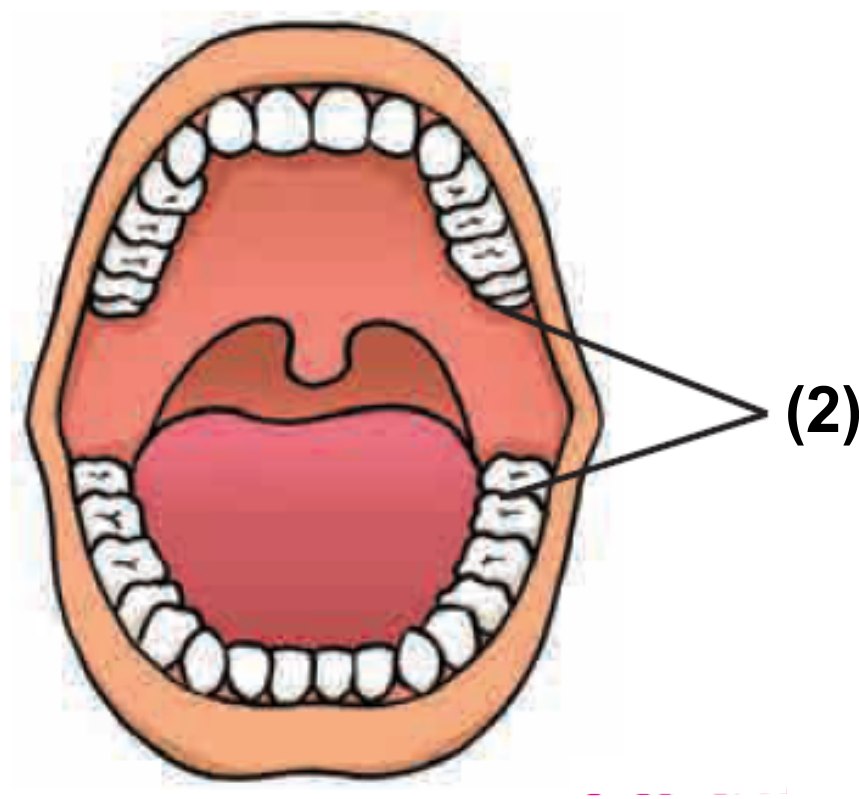
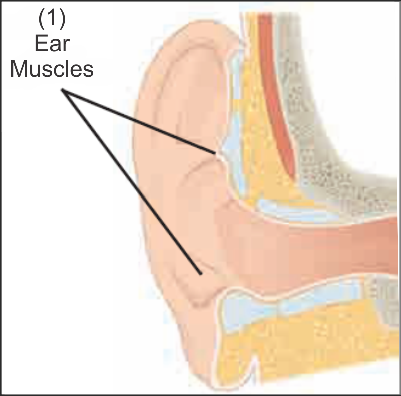
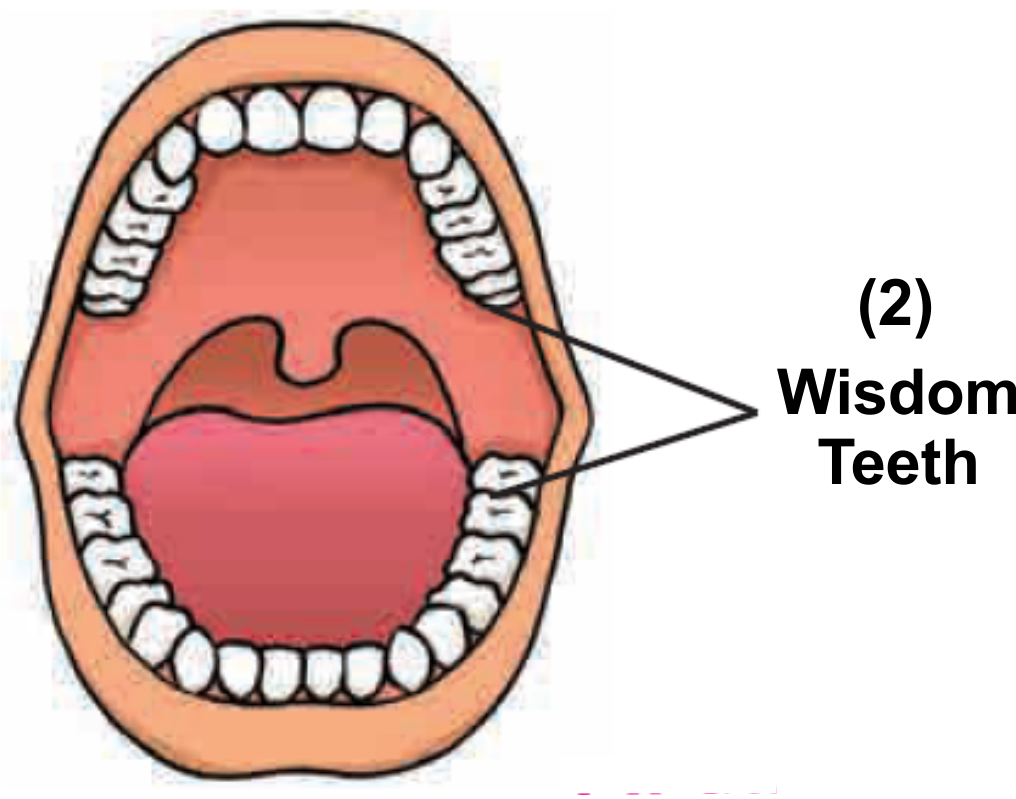
Ans
Q. 8. Give scientific reasons 14
1.Study of fossils is an important aspect of study of evolution or explain the importance of fossils as proof of evolution.
Ans: The organisms that existed millions of years ago in large number get buried in deep layers of Earth due to disasters like flood, earthquake, volcano, etc.
Remnants and impressions of such organisms remain preserved underground. These are called as fossils.
These fossils provide Paleontological Evidences supporting the theory of evolution as these fossils can be studied by Carbon Dating method.
Once the age of fossil been determined by such technique, it becomes easy to deduce the information about other erstwhile organisms.
Therefore, Study of fossils is an important aspect of study of evolution.
2.Natural selection is not the only factor responsible for evolution.
Ans Natural selection also plays important role because nature selects only those organisms which are fit to live and the rest perish.
However, Darwin did not mention any explanation about useful and useless modifications.
The theory of natural selection which preaches the survival of fittest fails to explain the presence of vestigial organs.
As one organism is evolved from other, natural selection cannot explain how the evolved one as well as the unevolved organisms still coexist.
Therefore, Natural selection is not the only factor responsible for evolution.
3.Duck billed Platypus is a connecting link.
Ans: i. some plants and animals show some morphological characters by which they can be related to two different groups; hence they are called as ‘connecting links’.
ii. Duck billed platypus lays eggs which is similar to the group of reptiles.
iii. But it also shows relationship with mammals too due to presence of mammary glands and hairs.
This indicates that Duck billed platypus is connecting link between reptiles and mammals. Therefore, Study of fossils is an important aspect of study of evolution.
4.There is evidences of fatal science among chordates.
Ans i. Very young embryos of fish, amphibians, reptiles, birds and mammals show quite similar structure in the early stages.
ii. As the further growth takes place, they acquire different patterns
iii.The initial similarity between the vertebrate embryos is an evidence that during evolution, there was a common ancestor for all the vertebrate classes.
iv. This is called embryological evidence for vertebrate evolution.
5. Carbon dating method is based upon the radioactive decay of naturally occurring C-14.
Ans i. Carbon consumption of animals and plants stops after death and since then, only the decaying process of C-14 occurs continuously.
ii.In case of dead bodies of plants and animals, instead of remaining constant, the ratio between C-14 and C- 12 changes continuously as C-12 is non-radioactive.
iii.The time passed since the death of a plant or animal can be calculated by measuring the radioactivity of C- 14 and ratio of C-14 to C-12 present in their body. This is ‘carbon dating’ method.
iv.It is used in paleontology and anthropology for determining the age of human fossils and manuscripts.
Once the age of fossil been determined by such technique, it becomes easy to deduce the information about other erstwhile organisms.
v.It seems that vertebrates have been slowly originated from invertebrates.
6.The biodiversity that is known today has been said to be formed from very simple unicellular organism due to evolution.
Ans Formation of new species of plants and animals is the effect of evolution. Species is the group of organisms that can produce fertile individuals through natural reproduction.
Each species grows in specific geographical conditions. Their food, habitat, reproductive ability and period is different.
However, genetic variation is responsible for formation of new species from earlier one. Besides, geographical and reproductive changes are also responsible.
Similarly, geographical or reproductive isolation also leads to speciation that creates bio diversity along the region.
Progressive development of plants and animals from the ancestors having different structural and functional organization is called evolution.
Thus, it can be said that the biodiversity that is known today is originated from very simple unicellular vi.
organism due to evolution.
7.Formation of new species of plants and animals is the effect of evolution.
Ans i. Species is the group of organisms that can produce fertile individuals through natural reproduction.
Each species grows in specific geographical conditions. Their food, habitat, reproductive ability and period is different.
However, genetic variation is responsible for formation of new species from earlier one. Besides, geographical and reproductive changes are also responsible.
Similarly, geographical or reproductive isolation also leads to speciation which is the result of evolution of the new species which survival modifications.
Therefore, Formation of new species of plants and animals is the effect of evolution.
Q. 9. Laws / Define / Principles 4
1.Define vestigial organs.
Ans i. Vestigial organs are degenerated or underdeveloped organs of organisms which do not perform any function.
ii.According to the principle of natural selection, such organs are on the verge of disappearance. But it takes many millions of years for its complete vanishing.
iii.The vestigial organs in one animal may be of use but of other kind of the animal they still perform regular functions.
2.Define heredity.
Ans Heredity : Heredity is the process by which the biological characters from parental generation are transmitted to the next generation through genes.
Q. 10. Write Short Notes 20
1.Write short note on Carbon dating.
Ans i. Carbon consumption of animals and plants stops after death and since then, only the decaying process of C-14 occurs continuously.
ii.In case of dead bodies of plants and animals, instead of remaining constant, the ratio between C-14 and C- 12 changes continuously as C-12 is non-radioactive.
iii.The time passed since the death of a plant or animal can be calculated by measuring the radioactivity of C- 14 and ratio of C-14 to C-12 present in their body. This is ‘carbon dating’ method.
iv.It is used in palaeontology and anthropology for determining the age of human fossils and manuscripts. Once the age of fossil been determined by such technique, it becomes easy to deduce the information about other erstwhile organisms.
3.Write short note on Connecting link.
Ans: Some living organisms possess some characters in them which are the distinctive features of different groups or phyla. Such individuals connect these two groups by sharing the characters of both and hence they are known as connective links.
Examples
Peripatus : Peripatus is the connecting link between Annelida and Arthropoda. It shows characters of both
i.animal phyla. Like annelid worm, it shows segmented body, thin cuticle and parapodia. Like an arthropod, it shows open circulatory system and tracheal system for respiration.
Ii.Duck Billed platypus : This is a connecting link between reptiles and mammals. Like reptiles it lays eggs but like mammals it has mammary glands and hairy skin.
Iii.Lung fish : Lung fish is a connecting link between fishes and amphibians. Though a fish, it shows lungs for respiration as in amphibian animals.
Iv.Connecting links indicate the direction and hierarchy of evolution.
4.Write short note on following diagram.

Ans i. The given figure shows Peripatus, lung fish & Peripatus which is a connecting link between two different groups of animals respectively.
Some plants and animals show some morphological characters by which they can be related to two different groups; hence they are called as ‘connecting links’.
In Peripatus, characters like segmented body, thin cuticle, and parapodia-like organs are present.
Similarly, these animals show tracheal respiration and open circulatory system similar to arthropods.
Therefore, Peripatus is considered as a connecting link between annelida and arthropoda.
5.Write short note on Vestigial Organs.
Ans i. Degenerated or underdeveloped useless organs of organisms are called as vestigial organs. In living organisms, sudden development of new tissues or organs for living in changing environment is not
possible.
Instead, existing organs undergo gradual changes. However, same structure under different situation may become useless or even harmful.
Such structure begins to degenerate under such situation as per the principle of natural selection. Such organs are seen in different phases of disappearance in different animals.
Such organ, though non-functional in certain organism, it may be functional in other organisms i.e. it is not vestigial in other organisms. For example Appendix, tail-bone (coccyx), wisdom teeth, and body hairs are
present in body of human being.
6.Write short note on Darwin’s theory of natural selection.
Ans Charles Darwin had collected innumerable specimens of plants and animals and depending upon the observations of those specimens; he published the theory of natural selection which preaches the survival
of fittest.
Darwin had published a book titled ‘Origin of Species’. While explaining the concept, Darwin says that all the organisms reproduce prolifically.
All the organisms compete with each other in a life-threatening manner. In this competition, only those
organisms sustain which show the modifications essential for winning the competition.
However, besides this, natural selection also plays important role because nature selects only those organisms which are fit to live and the rest perish.
Therefore, Darwin’s theory of natural selection was widely accepted for long duration.
7.Write short note on following diagram.

Ans i. The following diagram shows human hand, cat’s foreleg, flipper of whale and patagium of bat.
There is no superficial similarity observed between these structures which is observable.
Similarly, use of each of those structures is different in respective animals.
However, there is similarity in structure of bones and bony joints in organs of each of those animals. This similarity indicates that those animals may have common ancestor.
Therefore, they provide Anatomical Evidence supporting the theory of evolution.
8.Write short note on Evolution.
Ans i. Evolution is the gradual change occurring in living organisms over a long duration.
ii.This is a very slow-going process through which development of organisms is achieved.
iii.All the stages in changes occurred in various components ranging from stars and planets in space to the biosphere present on the Earth should be included in the study of evolution.
iv.Formation of new species due to changes in specific characters of several generations of living organisms as a response to natural selection, is called as evolution.
v.Progressive development of plants and animals from ancestors having different structural and functional organisation is called evolution.
9.Write short note on Embryology.
Ans i. Embryology is the branch of biology that studies development of embryos and fetuses.
ii.Comparative study of embryonic developmental stages of various vertebrates was observed which supported the theory of evolution.
Iii.All embryos show extreme similarities during initial stages and those similarities decrease gradually.
iv.Similarities in initial stages indicate the common origin of all these animals.
10.Write short note on Lamarckism.
Ans i. Jean-Baptiste Lamarck proposed that morphological changes occurring in living organisms are responsible for evolution and the reason behind those morphological changes is activities or laziness of that organism.
ii. He called this concept as principle of ‘use or disuse of organs’.
He said that the neck of giraffe has become too long due to browsing on leaves of tall plants by extending their neck for several generations.
Similarly, wings of birds like ostrich and emu have become weak due to no use, legs of the birds like swan
and duck have become useful for swimming due to living in water and snakes have lost their legs by modifications in their body for burrowing habit.
Therefore, this is called as theory of inheritance of acquired characters or Lamarckism.
11.Write short note on Speciation.
Ans Formation of new species of plants and animals is the effect of evolution.
Species is the group of organisms that can produce fertile individuals through natural reproduction and classification of animals based on species is called speciation.
Q. 11. Write properties/characteristics/uses/advantage/effects. 2
1.In which way is science of heredity useful these days?
Ans: The science of heredity is useful in the following ways :
i.For diagnosis of hereditary disorders.
ii.For treatment of hereditary disorders
iii.For prevention of hereditary disorders
iv.For production of hybrid varieties of animals and plants
v.For using microbes in the industrial processes.
Q. 12. Complete the given flow chart / table 2
 1.
1.
.
 Ans:
Ans:
Q. 13. Distinguish between 8
1.Anatomical Evidences and Morphological Evidences.
| Anatomical Evidences | Morphological Evidences | |
| The superficial similarity between structures of
various organs in different organisms which perform different functions are called Anatomical characteristics. |
The similarity between position of various
morphological organs in different organisms which perform similar functions are called Morphological characteristics. |
|
| i. | ||
| ii. | The similarity between structure of human
hand, cat’s foreleg, flipper of whale and patagium of bat provides Anatomical Evidence. |
Various similarities like structure of mouth,
position of eyes, structure of nostrils and ear pinnae provide Morphological Evidence. |
Ans:
- Hereditary Characters and Acquired Characters.
Ans:
| Hereditary Characters | Acquired Characters | |
| i. | These characters are carried from one generation to other through inheritance of genes and the characters of parent and filial generation have similarity. | These characters are learned or acquired by the organism in its life period and thus may differ from the parent. |
| ii. | These characters are definite and express themselves in the organism. | These characters may or may not be expressed in the organism. |
| iii. | These define the true characteristics of the organism. | These characters are hypothetical and are said to be acquired by the organisms |
| iv. | These characters are most essential for survival of any organism | These characters may or may not be required for the survival of the organism. |
- DNA and RNA
| DNA | RNA | ||
| i. | i.DNA is generally the hereditary genetic material in almost all the organisms. | RNA is not used as hereditary genetic material | |
Ans:
| except in some prokaryotes. | ||
| It is mostly single stranded. | ||
| iii. | Its consists of Thymine. | It consists of Uracil. |
| iv. | DNA carries out the function of inheritance of characters. | RNA carries various functions depending on its type. |
4.Transcription and Translation
Ans:
| Transcription | Translation | |
| i. | The process of RNA synthesis from DNA is called as ‘transcription’. | Formation of amino acid chain from mRNA codon sequence is called ‘translation’ |
| ii. | It occurs in the nucleus. | It occurs outside the nucleus. (in ribosome) |
| iii. | It does not make use of ribosomes. | The process is carried out inside the ribosome. |
| iv. | It directly depends on the gene of the DNA. | It indirectly depends on the gene of the DNA. |
Q. 14. Give examples 6
1.Give examples of Vestigial Organs.
Ans i. Tail-bone (coccyx) ii Wisdom teeth iii. Appendix iv. Ear muscles
2. Give examples of Connecting Links.
Ans i. Peripatus [between annelida and arthropoda]
ii. Lung fish [between reptiles and amphibians and fishes] iii.Duck billed platypus [between reptiles and mammals]
iv.Archaeopteryx [between reptiles and aves]
3.Give example of Four Anatomically similar organs.
Ans i. Human hand ii. Cat’s foreleg iii. Flipper of whale iv. Patagium of bat
Q. 15. Give explanation using the given statements. 9
1.Read the following statements and justify the same in your own words with suitable examples. Geographical isolation of organisms gradually leads to speciation.
Ans i. It is the population of organisms that are separated by geographical factors like rivers changing their course, drifting of continent etc. and hence not able to exchange genetic material with other organisms of the same species.
ii.Example: A mountain range prevents two types of goat from mating, causing the gene pool to become less varied.
iii.Example: A forest fire causes permanent separation of a group of deer from their native population causing the small group to interbreed only with one another. Over the time the group becomes an entirely different species.
2.Read the following statements and justify the same in your own words with suitable examples. Reproductive isolation of organisms gradually leads to speciation.
Ans i. The factors which stop or prevent species or groups of organisms from interbreeding and reproduce sexually is reproductive isolation. Due to reproductive barriers, closely related species remain separated for centuries and evolve to become a completely new species.
- Example: Some frogs prefer to mate in rapidly moving water whereas some others prefer slow-moving or stagnant water s in ponds.
- Example: Snails with a left coil with left coiling shells cannot mate with snails with right coiling shells. Which can lead to further differentiation and speciation.
3.Read the following statements and justify the same in your own words with suitable examples. Human evolution began about seven crore years ago.
Ans i. About seven crore years ago dinosaurs disappeared and monkey like animals similar to the modern lemur
were formed from some ancestors.
Ii.The tail of these monkeys disappeared (Africa) about four crore years ago.
Iii.Some developed enlarged brain, hands were also improved and thus ape like animals were evolved like gibbon and orangutan and reached South and North-East Asia.
Iv.From ape like animals who stayed in Africa gorilla and chimpanzee were evolved about 2.5 crore years.
V. Two crore year old species of apes used their hands more for eating food and other work.
Those apes started to live on land, their lumbar bone developed, started to stand in erect posture making
Vi.their hands free, and thus first human like animals were formed about two crore years ago– Ramapithecus in East Africa.
Vii.About forty lakh years ago, in South Africa, Ramapithecus grew up in size, became more intelligent.
Viii.Gradually animals similar to be the member of Homo evolved who were skilled, about twenty lakh years ago.
Ix.Human beings with erect posture finally evolved about fifteen lakh years. (China and Indonesia)
X.Evolution of brain continued and brain of fifty year old man could be considered as Homo-sapiens that is wise man. Example-Neanderthal man.
Xi.The Cro-Magnon man evolved about fifty thousand years ago. Homo sapiens started agriculture, cattle rearing, developed cities, cultural development was seen about ten thousand years ago.
Xii.Art of writing was invented, modern science emerged, industrial society was developed and finally about two hundred years ago we have reached this stage.
Q. 16. Label the diagram and explain. 3
1.
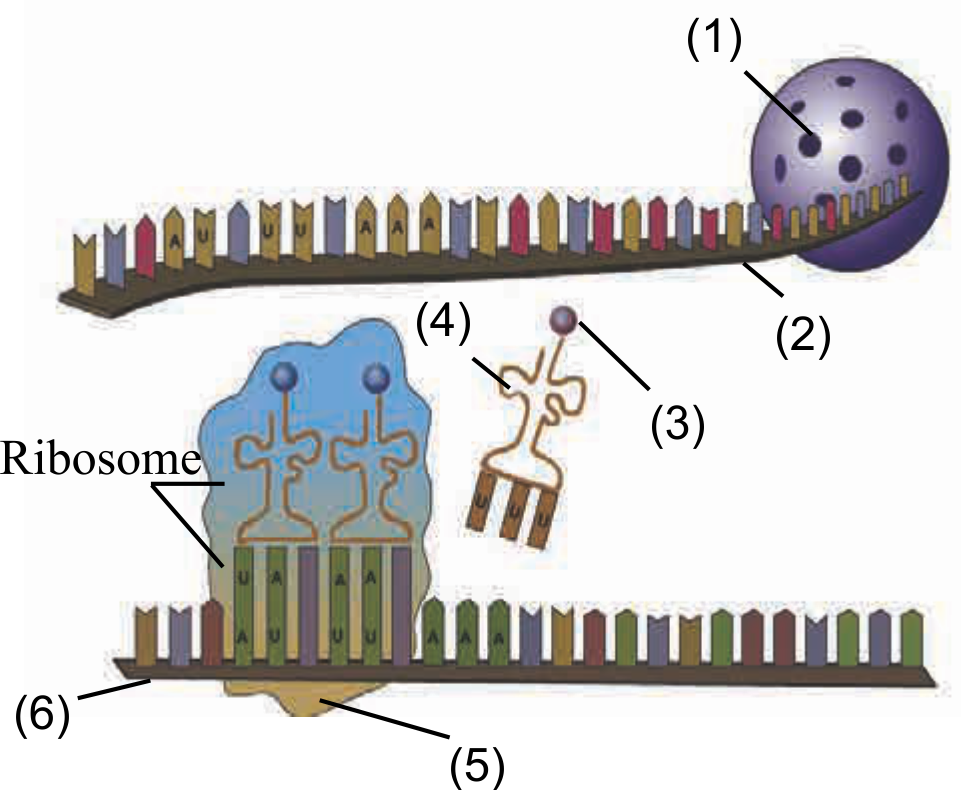
Ans:

Q. 17. Complete the table/ web/ flow chart 3
1


Ans
Q. 18. Explain with the help of examples 6
1.Explain in brief –
i.Lamarck’s principle of ‘use or disuse of organs’.
ii.Give two examples.
Ans i. The morphological changes occurring in living organisms are responsible for evolution and the reason behind those morphological changes is activities or laziness of that organism. This concept is called as principle of ‘use or disuse of organs’.
ii.The neck of giraffe has become too long due to browsing on leaves of tall plants by extending their neck for several generations.
Wings of birds like ostrich and emu have become weak due to no use.
- Explain with the help of examples. Connecting links provide the evidence of evolution.
Ans Some plants and animals show some morphological characters by which they can be related to two different groups; hence they are called as ‘connecting links’.
Example, In Peripatus, characters like segmented body, thin cuticle, and parapodia-like organs are
present. Similarly, these animals show tracheal respiration and open circulatory system similar to arthropods.
This indicates that Peripatus is connecting link between annelida and arthropoda.
Similarly, duck billed platypus lays eggs like reptiles but shows relationship with mammals too due to presence of mammary glands and hairs.
Lung fish performs respiration with lungs irrespective of being fish. This forms a connecting link between aquatic and terrestrial animals.
These examples indicate that mammals are evolved from reptiles and amphibians from fishes.
Q. 19. Complete the sentences in paragraph 15
Complete the paragraph:
(paleobiology, erstwhile, C-12, radioactive, Carbon consumption, anthropology, non-radioactive, C-14, paleontology)
…………… of animals and plants stops after death and since then, only the decaying process of ……………
occurs continuously. In case of dead bodies of plants and animals, instead of remaining constant, the ratio between C-14 and C-12 changes continuously as C-12 is The time passed since the death of a
plant or animal can be calculated by measuring the radioactivity of C-14 and ratio of C-14 to C-12 present in their body. This is ‘carbon dating’ method. It is used in …………… and for determining the age of
human fossils and manuscripts. Once the age of fossil been determined by such technique, it becomes easy to deduce the information about other …………… organisms. It seems that vertebrates have been slowly originated from invertebrates.
Ans Carbon consumption of animals and plants stops after death and since then, only the decaying process of
C-14 occurs continuously. In case of dead bodies of plants and animals, instead of remaining constant, the
ratio between C-14 and C-12 changes continuously as C-12 is non-radioactive. The time passed since the death of a plant or animal can be calculated by measuring the radioactivity of C-14 and ratio of C-14 to C-12 present in their body. This is ‘carbon dating’ method. It is used in paleontology and anthropology for determining the age of human fossils and manuscripts. Once the age of fossil been determined by such technique, it becomes easy to deduce the information about other erstwhile organisms. It seems that vertebrates have been slowly originated from invertebrates.
2.Complete the paragraph
(translation, anticodon, tRNA, mRNA, amino acids, triplet codon, transcription, DNA)
The …………… formed in nucleus comes in cytoplasm. It brings in the coded message from The message contains the codes for amino acids. The code for each amino acid consists of three nucleotides. It is called as ‘……………‘ . Each mRNA is made up of thousands of triplet codons. As per the message on mRNA, …………… are supplied by the ……………. For this purpose, tRNA has ‘……………’ having complementary sequence to the codon on mRNA. This is called ‘ ‘.
Ans The mRNA formed in nucleus comes in cytoplasm. It brings in the coded message from DNA The message contains the codes for amino acids. The code for each amino acid consists of three nucleotides. It is called as ‘triplet codon‘ . Each mRNA is made up of thousands of triplet codons. As per the message on mRNA, amino acids are supplied by the tRNA. For this purpose, tRNA has ‘anticodon’ having complementary sequence to the codon on mRNA. This is called ‘translation‘.
3.Complete the paragraph
(Cultural, agriculture, fire, brain, Cro-Magnon, Homo sapiens, Neanderthal)
Evolution of upright man continued in the direction of developing its for the period of about 1 lakhyears and meanwhile he discovered the ……………. . Brain of man 50 thousand years ago had been sufficiently evolved to the extent that it could be considered as member of the species ……………. .……………. man can be considered as the first example of wise-man. The man evolved about 50thousand years ago and afterwards, this evolution had been faster than the earlier. About 10 thousand years ago, wise-man started to practice the ……………. . It started to rear the cattle-herds and established the cities. development took place later.
Ans: Evolution of upright man continued in the direction of developing its brain for the period of about 1 lakh years and meanwhile he discovered the fire. Brain of man 50 thousand years ago had been sufficiently evolved to the extent that it could be considered as member of the species Homo sapiens. Neanderthal man can be considered as the first example of wise-man. The Cro-Magnon man evolved about 50 thousand years ago and afterwards, this evolution had been faster than the earlier. About 10 thousand years ago, wise-man started to practice the agriculture. It started to rear the cattle-herds and established the cities. Cultural development took place later.
4.
Some plants and animals show some morphological characters by which they can be related to two different groups; hence they are called as ‘……………’. Ex. In Peripatus, characters like segmented body, thin cuticle, and parapodia-like organs are present. Similarly, these animals show respiration
and open circulatory system similar to arthropods. This indicates that Peripatus is connecting link between annelida and arthropoda. Similarly, duck billed platypus lays eggs like reptiles but shows relationship with mammals too due to presence of mammary glands and hairs. Lung fish performs respiration with lungs irrespective of being fish. These examples indicate that mammals are evolved from reptiles and amphibians from fishes.
i.Fill in the blank in the following paragraph.
ii.Give one example of a connecting link any other than from the given paragraph.
iii.The example from the above question is connecting link between which two different groups of animals ?
Ans i. Connecting Links tracheal
ii.Archaeoptryx is an example of a connecting link. Also frog , an amphibian, is a connecting link.
iii.Archaeoptryx is a connecting link between reptiles and aves. Whereas frog is a connecting link between aquatic and terrestrial animals.
5.Complete the paragraph:
(thymine, protein synthesis, Central Dogma, RNA, nucleotides, proteins, transcription, uracil )
With the help of RNA, the genes present in the form of DNA participate in the functioning of cell and thereby control the structure and functioning of the body. Information about …………… is stored in the DNA and synthesis of appropriate proteins as per requirement is necessary for body. These proteins are synthesized by DNA through the RNA This is called as ‘……………’. mRNA is produced as per the sequence ofon
DNA. Only one of the two strands of DNA is used in this process. The sequence of nucleotides in mRNA being produced is always complementary to the DNA strand used for synthesis. Besides, there is in
RNA instead of …………… of DNA. This process of RNA synthesis is called as ‘. ’.
Ans With the help of RNA, the genes present in the form of DNA participate in the functioning of cell and thereby control the structure and functioning of the body. Information about protein synthesis is stored in the DNA and synthesis of appropriate proteins as per requirement is necessary for body. These proteins are synthesized by DNA through the RNA This is called as ‘Central Dogma’. mRNA is produced as per the sequence of nucleotides on DNA. Only one of the two strands of DNA is used in this process. The sequence of nucleotides in mRNA being produced is always complementary to the DNA strand used for synthesis. Besides, there is uracil in RNA instead of thymine of DNA. This process of RNA synthesis is called as ‘transcription’.
Q. 20. Write laws, theories and explain. 18
1.Explain with suitable examples importance of anatomical evidences in evolution.
Ans i. There are similarities in the structure and anatomy of different animal groups. E.g. human hand, forelimb of cat, patagium of bat and flipper of whale are all similar in their internal anatomy. There is similarity in the bones and joints of all these specimens.
ii. External morphology does not show any similarity. Use of each of the organ is also different in different animals. Structurally, they may not be related.
However, the similarities in the anatomy is an evidence that they may have a common ancestor.
In this way, the anatomical evidence thrown light on the process of evolution.
2.Write evolutionary history of modern man.
Ans . i.About seven crore years ago dinosaurs disappeared and monkey like animals similar to the modern lemur were formed from some ancestors.
ii.The tail of these monkeys disappeared( Africa) about four crore years ago.Iii.Some developed enlarged brain, hands were also improved and thus ape like animals were evolved like gibbon and orangutan and reached South and North-East Asia.
Iv. From ape like animals who stayed in Africa gorilla and chimpanzee were evolved about 2.5 crore years.
V.Two crore year old species of apes used their hands more for eating food and other work.
Those apes started to live on land, their lumbar bone developed, started to stand in erect posture making
Vi.their hands free, and thus first human like animals were formed about two crore years ago–Ramapithecus in East Africa.
vii.About forty lakh years ago, in South Africa, Ramapithecus grew up in size, became more intelligent.
Viii.Gradually animals similar to be the member of Homo evolved who were skilled, about twenty lakh years ago.
Ix. Human beings with erect posture finally evolved about fifteen lakh years. (China and Indonesia)
x.Evolution of brain continued and brain of fifty year old man could be considered as Homo-sapiens that is wise man. Example-Neanderthal man.
xi.The Cro-Magnon man evolved about fifty thousand years ago. Homo sapiens started agriculture, cattle rearing, developed cities, cultural development was seen about ten thousand years ago.
xii.Art of writing was invented, modern science emerged, industrial society was developed and finally about two hundred years ago we have reached this stage.
3.Explain the theory of evolution and mention the proof supporting it.
Ans 1. i. Progressive development of plants and animals from their ancestors having different structural and functional organization is called evolution.
ii. It can also be defined as the formation of new species due to changes in specific characters of several generations of living organisms as a response to natural selection.
4.Proof here means evidences of evolution. These evidences are as follows.
i.Morphological evidences
ii.Anatomical evidences
i.The Vestigeal organs
ii.Palaentological evidences
iii. Embryological evidences
5.Embryological Evidences support theory of evolution. Explain.
Ans i. Embryology is the branch of biology that studies development of embryos and foetuses.
Comparative study of embryonic developmental stages of various vertebrates was observed which supported the theory of evolution.
All embryos show extreme similarities during initial stages and those similarities decrease gradually.
ix. Similarities in initial stages indicate the common origin of all these animals.
According to the Theory of Evolution, Changes and development in living organisms had been all round and multi-dimensional and this led to evolution of different types of organisms.
And therefore, Embryological Evidences provide significant support to theory of evolution.
6..Explain Lamarck’s theory of ‘acquired characters’.
Ans i. Jean-Baptiste Lamarck proposed that morphological changes occurring in living organisms are responsible for evolution and he called this concept as principle of ‘use or disuse of organs’.
From the diagram, he tried to explain that the neck of giraffe has become too long due to browsing on leaves of tall plants by extending their neck for several generations.
Similarly, he gave other examples as wings of birds like ostrich and emu have become weak due to no use, legs of the birds like swan and duck have become useful for swimming due to living in water.
Another example of Lamarckism was given regarding snake’s legs that they have lost their legs by modifications in their body for burrowing habit.
All these examples are types of ‘acquired characters’ and are transferred from one to another generation. vi.This is called as theory of inheritance of acquired characters or Lamarckism.
7.Objections to Darwin’s theory of natural selection.
Ans i. According to Darwin’s theory, natural selection plays important role because nature selects only those organisms which are fit to live i.e. survival of the fittest, and the rest perish.
Sustaining and selected organisms can perform reproduction and thereby give rise to the new species with their own specific characters.
Darwin’s theory of natural selection was widely accepted for long duration. However, some objections were raised against the theory.
Some of the main objections are:-
a. Natural selection is not the only factor responsible for evolution.
b. Darwin did not mention any explanation about useful and useless modifications.
There is no explanation about slow changes and abrupt changes. Irrespective of all these objections, Darwin’s work on evolution has been a milestone.
Q. 21. Write answers based on given diagram/ figure 3
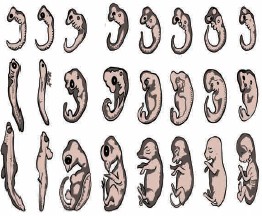 1.Observe the picture and answer the following questions.
1.Observe the picture and answer the following questions.
a.Which evidence of evolution is shown in the picture?
b.What can be proven with this proof?
c.Give one more example of evidence of evolution.
Ans A. Embryological evidence of evolution has been shown in the picture.
B. Similarities between all embryos in early stages indicates that all those animals may have common ancestor.
C. Vestigial organs, Connecting link, etc.
Q. 22. Answer the following 36
1.Vestigial organs, though non-functional in certain organism, it may be functional in other organisms. Explain.
Ans i. Degenerated or underdeveloped useless organs of organisms are called as vestigial organs.
In living organisms, sudden development of new tissues or organs for living in changing environment is not possible. Instead, existing organs undergo gradual changes.
Mostly, a specific structure in the body is useful under certain situation. However, same structure under different situation may become useless or even harmful.
Such structure begins to degenerate under such situation as per the principle of natural selection. It takes thousands of years for a structure to disappear.
For example, Appendix, which is useless to human, is useful and fully functional organ in ruminants. Hence, Vestigial organs, though non-functional in certain organism, it may be functional in other organisms.
2.What does the following diagram explain ? How is the the evolving character explained by Lamarck ?

Ans i. Jean-Baptiste Lamarck proposed that morphological changes occurring in living organisms are responsible for evolution and he called this concept as principle of ‘use or disuse of organs’.
From the diagram, he tried to explain that the neck of giraffe has become too long due to browsing on leaves of tall plants by extending their neck for several generations.
Similarly, he gave other examples as wings of birds like ostrich and emu have become weak due to no use, legs of the birds like swan and duck have become useful for swimming due to living in water.
Lamarck’s theory tried to explain the ‘acquired characters’ that are said to be transferred from one to another generation. This is called as theory of inheritance of acquired characters or Lamarckism.
Development of organs due to specific activities or their degeneration due to no use at all was widely accepted but transfer of those characters from generation to generation was rejected.
v. Because it had been verified many times that modifications brought in the organisms are not transferred to next generation and thereby Lamarck’s theory was disproved.
3.Explain the process in the given figure regarding gene expression.

Ans i. The given figure shows the process of Transcription in gene expression.
The process of RNA synthesis from the gene of the DNA strand is called as ‘transcription’.
With the help of RNA, the genes present in the form of DNA participate in the functioning of cell and thereby control the structure and functioning of the body.
Information about protein synthesis is stored in the DNA and synthesis of appropriate proteins as per requirement is necessary for body.
These proteins are synthesized by DNA through the RNA. This is called as ‘Central Dogma’. mRNA is produced as per the sequence of nucleotides on DNA.
Only one of the two strands of DNA is used in this process. The sequence of nucleotides in mRNA being produced is always complementary to the DNA strand used for synthesis.
Thus, during transcription a gene on DNA is transcribed in the form of mRNA.
3.Genetic variation is responsible for formation of new species from earlier one or how are the hereditary changes responsible for evolution ?
Ans i. Living organisms can produce new individuals like themselves due to genes only and some of those genes are transmitted to the next generation without any changes.
Due to this, some of the characters of parents are transmitted to their offspring.
Formation of new species of plants and animals is the effect of evolution. Species is the group of organisms that can produce fertile individuals through natural reproduction.
Variation of one organism from another creates the change in habitat, living conditions and the food on which the organism survives.
Sometimes genetic modification i.e. Mutation is responsible for creation of varied characteristics and may cause generation of new species.
Hence, Genetic variation is responsible for formation of new species from earlier one which is independent of the geographical factors.
4.‘Carbon dating’ method is used in palaeontology and anthropology for determining the age of human fossils and manuscripts. Explain.
Ans i. Carbon consumption of animals and plants stops after death and since then, only the decaying process of C-14 occurs continuously.
In case of dead bodies of plants and animals, instead of remaining constant, the ratio between C-14 and C-12 changes continuously as C-12 is non-radioactive.
The time passed since the death of a plant or animal can be calculated by measuring the radioactivity of C- 14 and ratio of C-14 to C-12 present in their body. This is ‘carbon dating’ method.
It is used in palaeontology and anthropology for determining the age of human fossils and manuscripts.
Once the age of fossil been determined by such technique, it becomes easy to deduce the information about other erstwhile organisms.
It seems that vertebrates have been slowly originated from invertebrates. Study of fossils is an important aspect of study of evolution.
4.Any three evidences in the theory of evolution.
Ans: i. Morphological Evidences :
Various similarities like structure of mouth, position of eyes, structure of nostrils and ear pinnae and thickly distributed hairs on body are seen in animals.
Whereas similarities in characters like leaf shape, leaf venation, leaf petiole, etc. occur in case of plants.
i This indicates that there are some similarities in those groups and hence it proves that their origin must be same and must have common ancestors.
Paleontological Evidences :
The organisms that existed millions of years ago in large number get buried in deep layers of Earth due to disasters like flood, earthquake, volcano, etc.
Remnants and impressions of such organisms remain preserved underground. These are called as fossils.
These fossils provide Paleontological Evidences supporting the theory of evolution as these fossils can be studied by Carbon Dating method.
Once the age of fossil been determined by such technique, it becomes easy to deduce the information about other erstwhile organisms.
Iii.Embryological Evidences :
Comparative study of embryonic developmental stages of various vertebrates was observed which supported the theory of evolution.
All embryos show extreme similarities during initial stages and those similarities decrease gradually. Similarities in initial stages indicate the common origin of all these animals.
According to the Theory of Evolution, Changes and development in living organisms had been all round and multi-dimensional and this led to evolution of different types of organisms.
This explained the common ancestry and evolution of all the organisms from one primitive organism.
5.Underdeveloped, useless organs are non-functional yet present in humans.
Ans i. Degenerated or underdeveloped useless organs of organisms are called as vestigial organs.
ii. Mostly, a specific structure in the body is useful under certain situation. However, same structure under different situation may become useless or even harmful.
iii. Such organ, though non-functional in certain organism, it may be functional in other organisms i.e. it is not
vestigial in other organisms.
For example, Appendix, which is useless to human, is useful and fully functional organ in ruminants.
Similarly, muscles of ear pinna, which are useless to human, are useful in monkeys for movement of ear pinna.
Various vestigial organs like tail-bone (coccyx), wisdom teeth, and body hairs are present in body of human being. Therefore, Study of fossils is an important aspect of study of evolution.
5.Comment on the following.
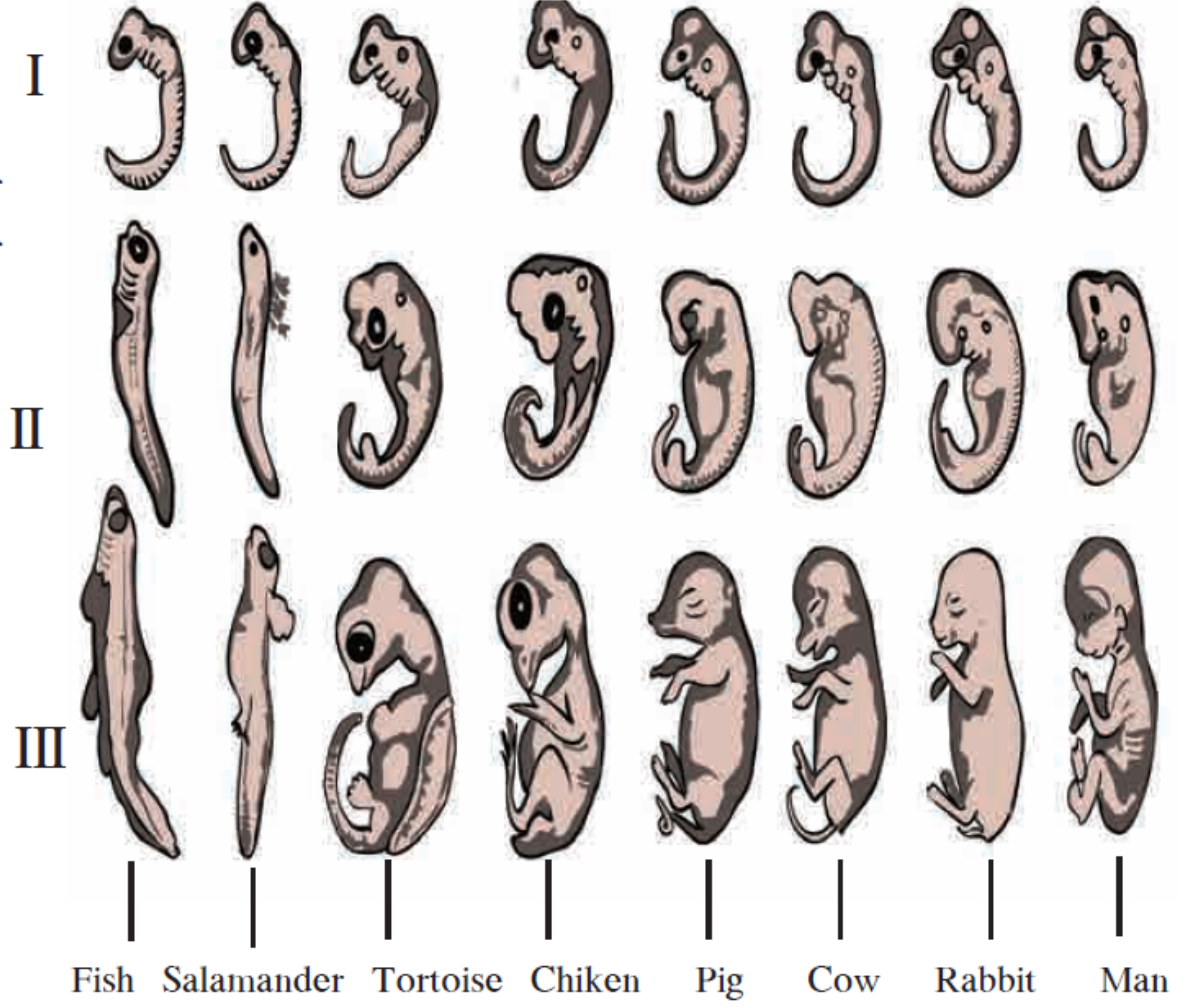
Ans i. The given figure shows the development of embryonic stage of the various organisms.
Comparative study of embryonic developmental stages of various vertebrates was observed which supported the theory of evolution.
All embryos show extreme similarities during initial stages and those similarities decrease gradually. Similarities in initial stages indicate the common origin of all these animals.
According to the Theory of Evolution, Changes and development in living organisms had been all round and multi-dimensional and this led to evolution of different types of organisms
This explained the common ancestry and evolution of all the organisms from one primitive organism.
6.Explain the formation of complex proteins.
Ans i. Proteins are synthesised by DNA using RNA, known as central dogma. mRNA is produced as per the sequence of nucleotides on DNA, using one of the strands of DNA and this is called transcription.
The mRNA formed in nucleus comes out in cytoplasm bringing the coded message from DNA for amino acids.
The code for each amino acid consists of three nucleotides called triplet codon each mRNA has thousands of triplet codons.
The amino acids brought in by tRNA,are bonded together by peptide bonds with the help of rRNA.
During this process, ribosomes keeps on moving from one end of mRNA to the other end by the distance of one triplet codon which is called translocation.
Such many chains come together to form complex proteins.
7.Is each and every organ useful to organism? Give your opinion.
Ans i. Organism may not necessarily make use of the organs present in the body as some might have become underdeveloped or non-functional over a period of time.
In living organisms, sudden development of new tissues or organs for living in changing environment is not possible. Instead, existing organs undergo gradual changes.
Degenerated or underdeveloped useless organs of organisms are called as vestigial organs.
However, same structure under different situation may become useless or even harmful. Such structure begins to degenerate under such situation as per the principle of natural selection.
It takes thousands of years for a structure to disappear. Such organs are seen in different phases of disappearance in different animals.
Such organ, though non-functional in certain organism, it may be functional in other organisms i.e. it is not vestigial in other organisms. Example; Appendix, tail-bone (coccyx), wisdom teeth, and body hairs are present in body of human being.
8.Why was Lamarck’s theory disproved?
Ans Lamarck’s theory tried to explain the ‘acquired characters’ that are said to be transferred from one to another generation. This is called as theory of inheritance of acquired characters or Lamarckism.
Development of organs due to specific activities or their degeneration due to no use at all was widely accepted but transfer of those characters from generation to generation was rejected.
The example given was that the neck of giraffe has become too long due to browsing on leaves of tall plants by extending their neck for several generations.
Other examples were given that the wings of birds like ostrich and emu have become weak due to no use and that the legs of the birds like swan and duck have become useful for swimming due to living in water.
Lamarck was able to explain the acquiring of the characters by learning process but the heredity of these characters is unexplainable as they fail to change the genetic modification with respect to the particular
characteristic.
Because it had been verified many times that modifications brought in the organisms are not transferred to next generation and thereby Lamarck’s theory was disproved.
9.i. What do you mean by central dogma ?
ii.What is transcription ?
iii.What is meant by triplet codon ?
Ans i. The information about protein synthesis which is stored in DNA is transferred into mRNA, which further undergoes translation process to produce proteins. This is called central dogma.
The process of mRNA synthesis from one of the two stands of DNA is called transcription.The 3 nucleotides present in mRNA which codes for particular amino acid is known as triplet codon.
Q. 23. Answer the following in detail 20
 1
1
i.What are invertebrates ?
ii.Give any two examples of the organisms precisely found in Mesozoic era.
Iii.group refers to aquatic animals.
Iv.What are the remnants of the buried animals called as ?
V.Why are the Invertebrates shown in the deepest layers of Earth ?
Ans i. Animals which do not have a vertebral column or a notochord are called Invertebrates.
ii. Dinosaurs, Snakes, crocodiles are some reptiles to be found in the Mesozoic era.
iii.Pisces group refers to aquatic animals.
iv.The remnants are called as fossils.
v.Vertebrates are said to be evolved from the Invertebrates in the course of evolution and thus oldest fossils to be found before vertebrates are of invertebrates, in the deepest layer.
2
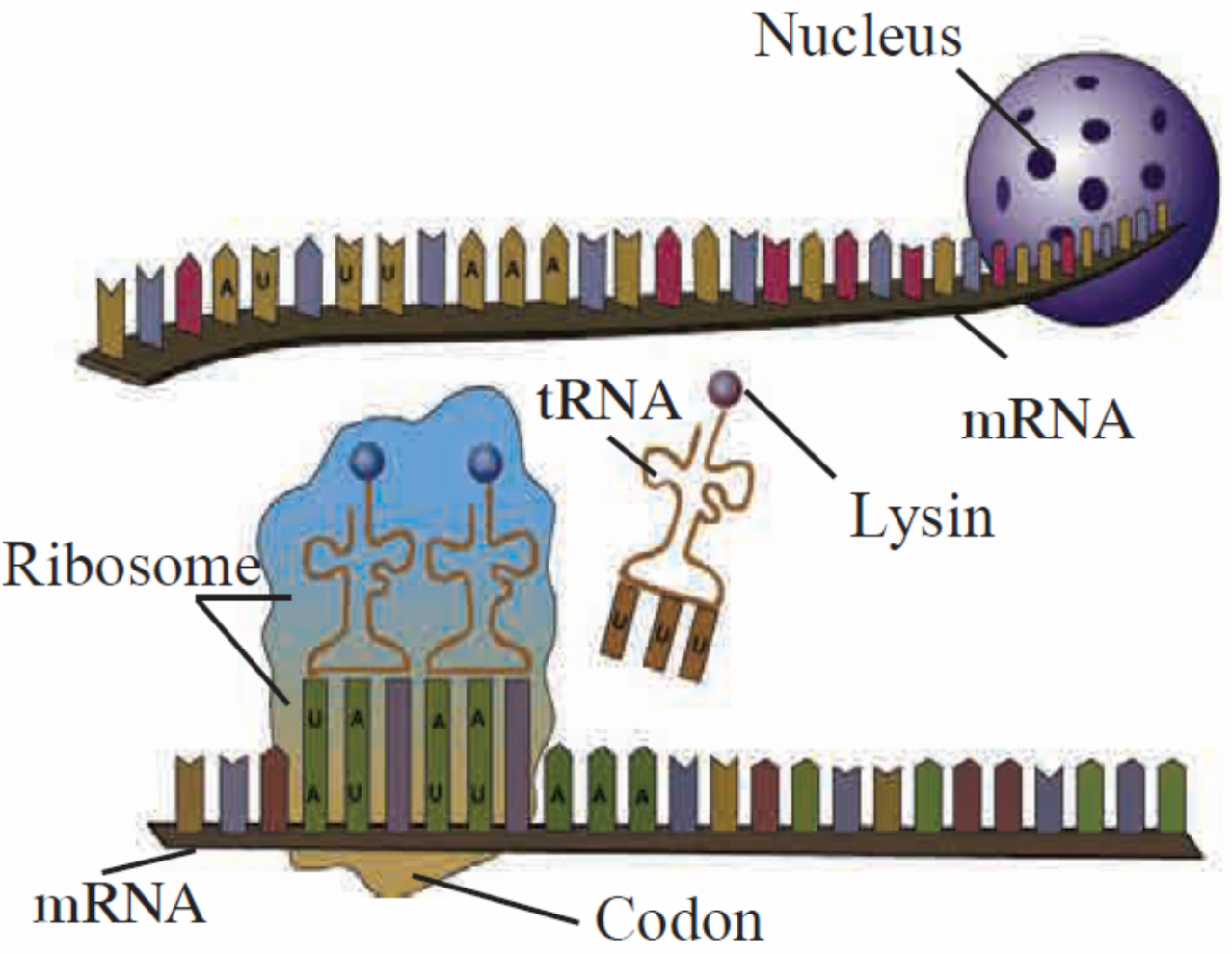
i.How is mRNA formed ?
ii.What is a codon ?
iii.During Translocation, the movement occurs of over mRNA.
Iv.How does tRNA bind to mRNA ?
V.How are amino acids bonded together ?
Ans i. mRNA is transcribed from DNA by the process of transcription.
ii.The code for each amino acid consists of three nucleotides. It is called as ‘triplet codon’.
During Translocation, the movement occurs of Ribosome over mRNA.
iv. tRNA binds to mRNA by complementary sequence of codon called as anti-codon.
v.Amino acids are bonded together by peptide bonds.
3 Darwin’s theory of natural selection:
Charles Darwin had collected innumerable specimens of plants and animals and depending upon the observations of those specimens; he published the theory of natural selection which preaches the survival of fittest. For this purpose, Darwin had published a book titled ‘Origin of Species’. While explaining the concept, Darwin says that all the organisms reproduce prolifically. All the organisms compete with each other in a life-threatening manner. In this competition, only those organisms sustain which show the modifications essential for winning the competition. However, besides this, natural selection also plays important role because nature selects only those organisms which are fit to live and the rest perish. Sustaining and selected organisms can perform reproduction and thereby give rise to the new species with their own specific characters. Darwin’s theory of natural selection was widely accepted for long duration. However, some objections were raised against the theory. Some of the main objections are- 1. Natural selection is not the only factor responsible for evolution. 2. Darwin did not mention any explanation about useful and useless modifications. 3. There is no explanation about slow changes and abrupt changes. Irrespective of all these objections, Darwin’s work on evolution has been a milestone.
i.What was Darwin’s book entitled ?
ii.What does Darwin’s theory preach ?
iii.What does Darwin’s theory emphasize on about evolution ?
iv.Why is the competition life-threatening, according to Darwin ?
v.How is the newly produced generation enhanced by natural selection
Ans i. ‘Origin of Species’.
Ii.Darwin’s theory of natural selection which preaches the survival of the fittest.
Iii.Darwin’s theory emphasizes on Natural selection and survival of the fittest in evolution.
Iv.According to Darwin, the one who is fit enough to compete for limited resources shall live while others would die and so the competition is said to be life-threatening.
V. Only sustaining and selected organisms can perform reproduction and thereby give rise to the new enhanced species with their own specific characters.
4. 3.5 billion years ago, life had been non existent on the Earth. At the beginning, there may have been only simple elements in the ocean on the Earth and simple type of organic and inorganic compounds may have been formed from those. Complex compounds like proteins and nucleic acids may have formed over the long period from those simple compounds. First primitive type of cells may have been formed from the mixture of different types of organic and inorganic compounds. Number of those cells may have increased at the cost of surrounding chemicals. There may had been some differences among those cells and according to the principle of natural selection, some may have shown good growth and some may have perished which could not adjust with the surrounding. At present, crores of species of plants and animals with huge diversity regarding shape and complexity are present on the Earth. Animal diversity ranges
from the unicellular Amoeba and Paramoecium to man and giant whale. The plant diversity consists of various species ranging from unicellular Chlorella to the huge banyan tree. The life exists on Earth everywhere from equator to both the poles. Organisms are present at all the places like air, water, land, rock, etc. Humans have shown curiosity about origin of life and reasons for such a great diversity in life present on the Earth since ancient period. Different theories about origin and evolution of life have been proposed till today of which theory of ‘Gradual development of living organisms is accepted.
i. What are the two types of Nucleic acids found in a cell ?
ii. Give any two examples of unicellular organisms.
Iii. How are the first primitive types of cells considered to be formed ?
Iv. Which theory is accepted today regarding the origin of evolution ?
V. What does the principle of natural selection state ?
Ans i. RNA and DNA
Ii.Amoeba, Paramoecium, Chlorella [any 2]
Iii.First primitive type of cells may have been formed from the mixture of different types of organic and inorganic compounds.
Iv.Today the theory of ‘Gradual development of living organisms is accepted regarding origin and evolution.
V.According to the principle of natural selection, some organisms show good growth and some perish which could not adjust with the surrounding.

